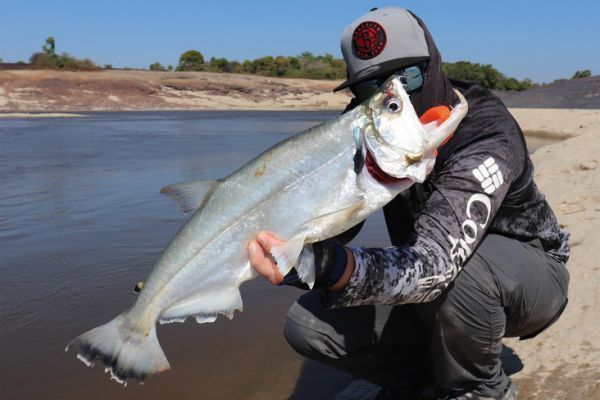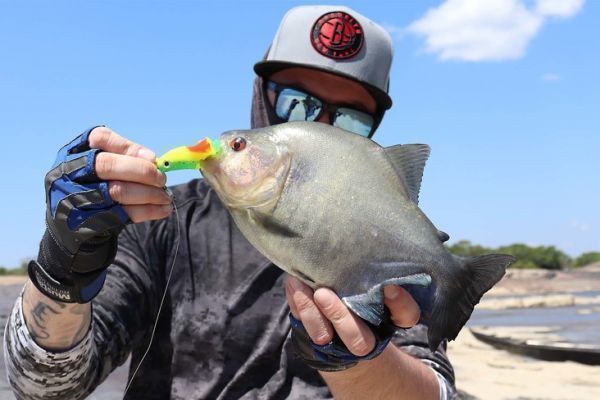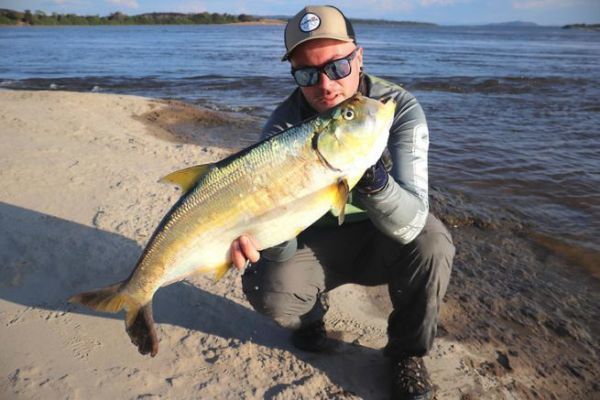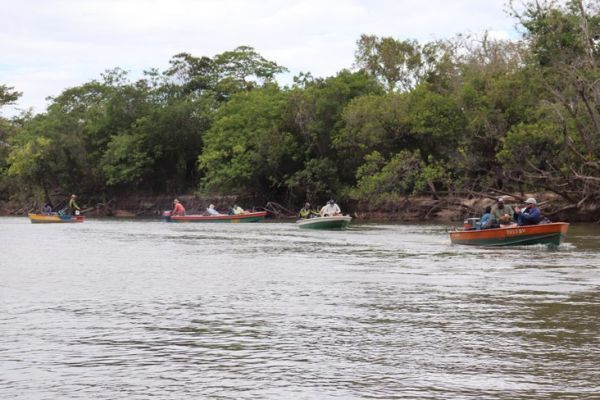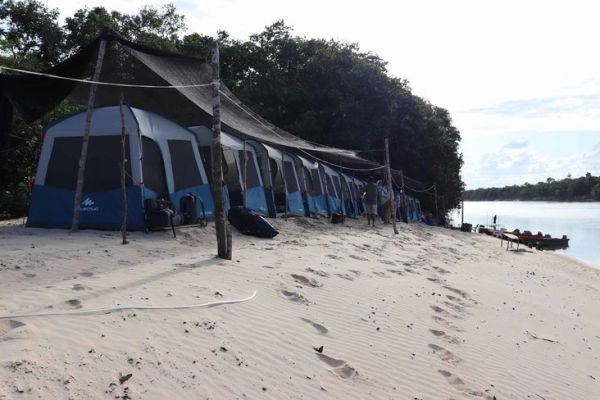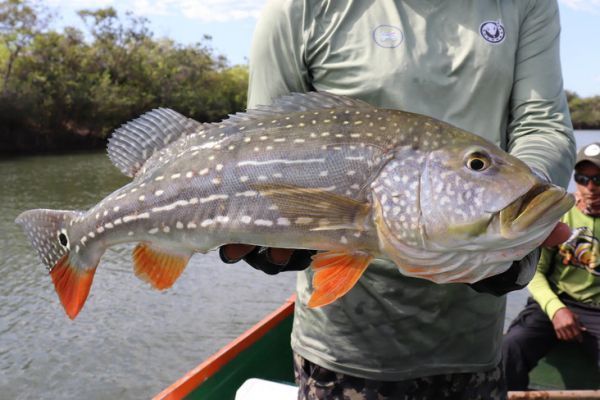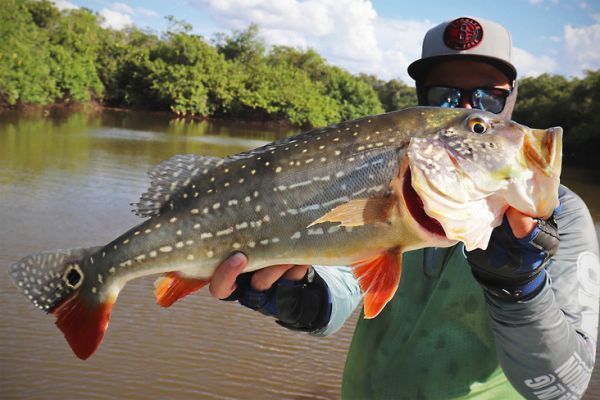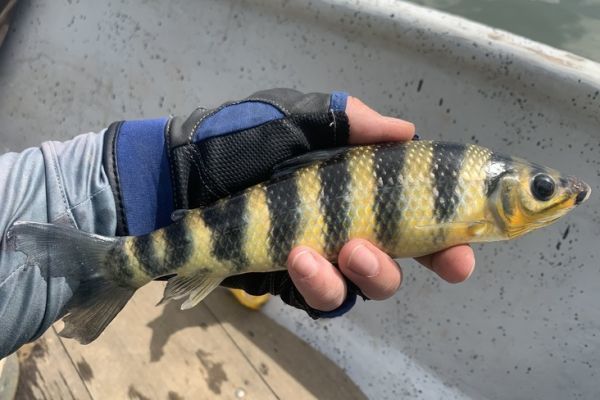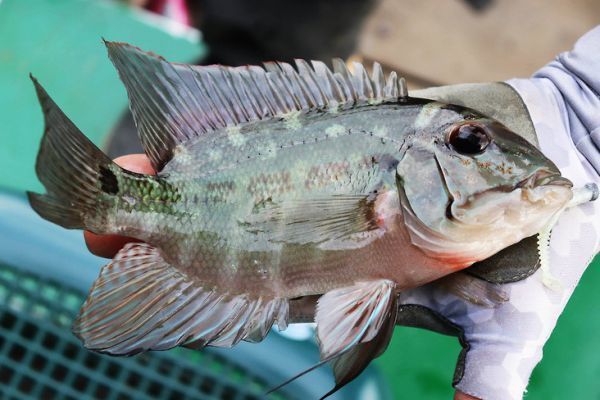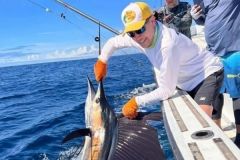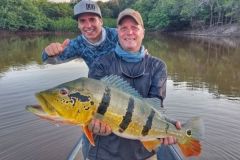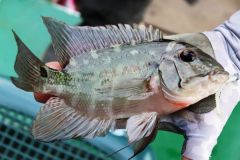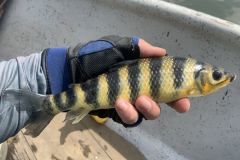The boats
On the Orinoco River, travel is done on long dugout canoes. The boats are not equipped for fishing and it is not serious, because they are only used to transport the fishermen. Indeed, the fishing is practiced from the edge, and the fishermen are deposited of spots in spots.
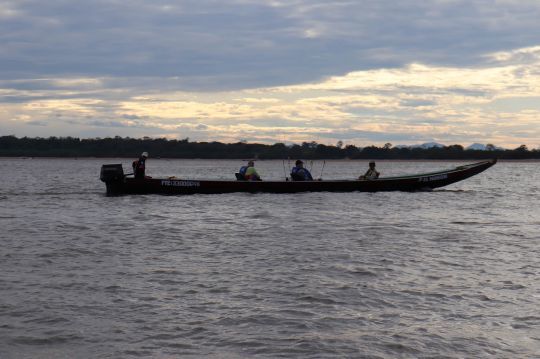
The starting point is the town of Puerto Carreño. From this town, it takes 15 minutes of navigation to get to the first fishing area, and another 30 minutes to get to the second area.
The payaras and sardinatas are found on very specific areas, made up of rapids and these are not so numerous on this part of the Orinoco. The targeted areas are made up of rocks, which create current accelerations.
In any case, the two fishing areas are large enough to allow fishermen not to cross paths, including with other groups.

The only time when we meet all together is to share the lunch. This meal takes place in the shade, it is the moment to refresh oneself, to remove the cap and the buff. It is about 35°C, we must not neglect this heat, protect ourselves from sunstroke and dehydration. Especially since we are only at the beginning of the stay, and such a stay is demanding for the body.
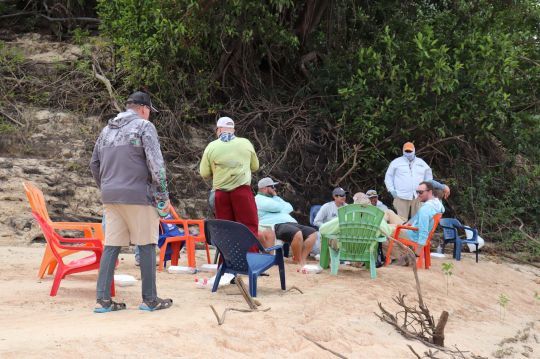
As far as fishing is concerned, this day was very quiet, with few hits.
After this complicated day, we finish on a last rock on the way back. My partners catch and land a few payaras on the edge, which gives hope. As for me, I landed a big payara at long distance, but I was lucky enough to get a very nice sardinata shortly after.
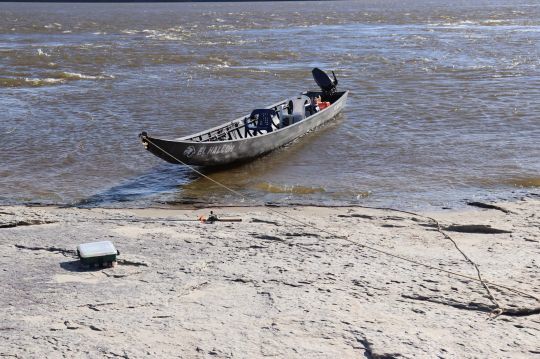
As far as the big sardinatas are concerned, the very fast animations and retrieves are the triggers to make them attack the lure. The problem with this animation, is that it causes many misses.
The distance that allowed me to trigger these two fish is too far to reach by casting. To reach these distances, I use a floating jerkbait minnow, which I let drift until I reach the current vein. Once I've reached it, I just close the reel's pick-up and start my retrieve. This is how I was able to get the last two fish of the day to attack.



